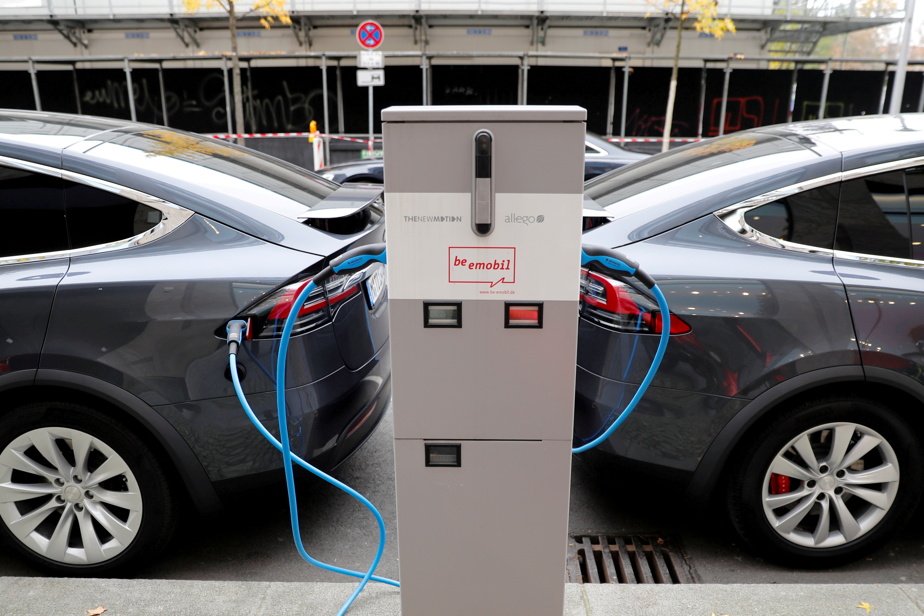The technological evolution of electric vehicles represents a subject of great interest these years, and for good reason. Not only are more and more motorists who have made this choice, but they also increasingly want to maximize their experience by improving the performance of their batteries.
To date, the batteries found in the greatest number on the electric vehicle market are lithium-ion batteries. However, with recent technological developments, we are increasingly seeing the appearance of LFP (lithium-iron-phosphate) batteries, which are popular in Chinese electric cars in particular, but also in certain Tesla models, particularly in the standard range of the model. 3. That’s without taking into account that these batteries are in the crosshairs of manufacturers Ford, Mercedez-Benz and Stellantis, who would like to use them in the near future.
In fact, since these batteries first appeared a few years ago, they have been gradually gaining popularity, so much so that they could quickly become a popular alternative to lithium-ion batteries. It remains to be seen whether these LFP batteries are so different from conventional batteries. Here’s what it is.
Attractive benefits
LFP batteries are initially attractive due to their low cost, increased safety and extended lifespan.
They are also more ecological than lithium-ion ones since they do not contain cobalt. This is a significant advantage if we consider that the extraction of cobalt is carried out not only in difficult, but often unethical, working conditions.
Their manufacturing process is also interesting. This is not the first replacement solution for lithium-ion batteries, but in the case of the LFP battery, the process differs in the very composition of the electrodes.
This is because LFP batteries have a graphite anode and a lithium iron phosphate cathode, while lithium-ion batteries have a graphite anode and a cobalt, nickel and manganese oxide cathode. . This difference gives LFP batteries unique advantages, including superior safety based on a more stable structure than lithium-ion batteries.
Therefore, they are less likely to be damaged when charging or discharging.
LFP batteries are also less likely to undergo dangerous chemical changes when exposed to high temperatures, thereby mitigating the risk of fire or explosion.
Another huge advantage is the longevity of LFP batteries, which can last up to 10 years and beyond. This is a great incentive for electric car owners who don’t want to have to replace their battery too often. Here they compare favorably to conventional lithium-ion batteries, which have an average lifespan of five to eight years, although new generations have improved a little in this regard.
Another major advantage is that LFP batteries are cheaper to produce than lithium-ion batteries, once again because they do not contain cobalt, a rare and expensive material.
Finally, LFP batteries are lighter than lithium-ion batteries, providing vehicles with greater energy efficiency.
Nothing is perfect
The advantages are numerous, therefore, but LFP batteries also have their share of disadvantages.
In this chapter, let us first note the energy density of LFP batteries, which is lower than that of lithium-ion batteries. In other words, they store less energy per unit of weight or volume. Electric vehicles equipped with LFP batteries therefore often have less range than vehicles equipped with conventional batteries and their rapid recharging capacity is reduced. Typically, these batteries can also take longer to recharge, putting the driver at a disadvantage while in motion.
Another disadvantage of LFP batteries is that they can lose more energy during charging and discharging, leading to increased loss of battery life over time and more frequent recharging.
Finally, although LFP batteries have a longer lifespan than lithium-ion batteries, this can be reduced by frequent charging and discharging cycles, heavy use or extreme temperatures. This means that ultimately, owners of electric vehicles equipped with LFP batteries may need to replace their batteries sooner than expected.
Since the beginning of this column, various experimental processes have been explored on this subject, notably in these texts:
The processes exist. However, only the future will tell us which of them will take its place in the hearts of manufacturers and motorists.
